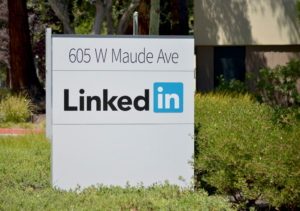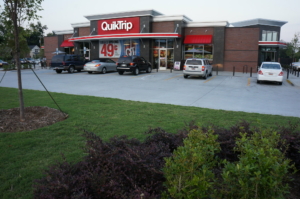Upgrade Your Marketing
We normally work with business owners over a 3-5 year window. During this time, we look at what their business is worth, suggest how to increase the value, and then take it to market when everything is ready. One of the easiest ways to increase the value of your business is to engage in marketing you may not have done before.
Word of Mouth Matters
We run into business owners of all ages from every type of industry who are very proud of the word-of-mouth marketing that they receive. Such marketing is very valuable not just to the seller but to the incoming buyer. But if it’s the only “marketing” you are doing, you are very likely leaving money on the table.
This is most often because marketing these days is moving close to the speed of technology. At that speed, it’s difficult to ask your internal team, who have other concerns, to research:
- The latest changes in SEO (Google changes things regularly)
- Optimizing Facebook ads (an art in itself)
- SMS and cold email campaigns
- Which emerging platforms might make sense for your business
We practice what we preach here at Apex and rather than hope for a marketing unicorn that does everything well, we work with EAG and we not too long ago welcomed Jeff Randolph on our podcast to offer some tips.
Level Up
“Not everyone can afford to hire a full-service agency for marketing, but everyone can afford some level of marketing…what makes sense for your business?” Jeff asks.
There really are so many ways of marketing that business owners are not aware of that might work really well for their businesses. Marketing agencies can highlight these possibilities and either push you in a direction to learn more about them or actually help you execute. Examples include:
- Geotargeting: This uses location data to reach consumers at the time they are looking for a service/product you might offer. You’ve probably used this as a consumer but might not have thought about the value it could have for your own business. A subset of geotargeting would be users of any free wi-fi your customer-facing storefront might offer. Depending on the opt-in agreement you offer to those using that free wi-fi, you may have an ongoing opportunity to market to people who have already physically set foot in your space (and probably have done business with you).
- Conversational marketing: We have talked about the value of chatbots before, and almost certainly you’ve been to a website where something pops up and asks, “Can I help you with anything today?” While AI may lead the way in starting the conversation, often at some point, that AI will hand you off to a human to close a sale. Have you implemented something like this that can turn someone who’s “just looking” into a customer today?
- Local influencers: We all know about the famous influencers with millions of followers who charge a lot of money for sponsored posts. But did you know there are probably dozens of influencers in your area, with followings in the thousands or tens of thousands, who can move the needle for your business, and can do so often for a very reasonable price? Do you know where to find these people and how to reach out to them?
- Storytelling: This is another topic we have spoken about in the past. Business owners who created their companies a couple of decades ago, or even just one decade ago, would have never imagined that there were potential customers who were interested in how the sausage was made. But things have evolved so much that videos of packing orders for clients are now part of advertising…and people buy from ads based on videos like this.
Those are just a few of the ideas that a marketing agency can open your business to executing. And the new customers and increased profitability that come with that? That goes straight into a narrative of a business on the grow, not on a plateau.
We’re happy to make an introduction to Jeff and others who can help you with your marketing and increase the value of your business prior to sale. Give us a call today.



 “So many people miss that LinkedIn is about the clouds of relationships that you can harness to tell your story…and share the stories of others,” says Jason Terry in
“So many people miss that LinkedIn is about the clouds of relationships that you can harness to tell your story…and share the stories of others,” says Jason Terry in 
 Sports is perhaps the most obvious example of the need to change tactics and strategies based on the situation. The same is true for parenting and business ownership: one size does not fit all when it comes to the people you manage. The best leaders change their styles to fit a situation in their business or a given employee.
Sports is perhaps the most obvious example of the need to change tactics and strategies based on the situation. The same is true for parenting and business ownership: one size does not fit all when it comes to the people you manage. The best leaders change their styles to fit a situation in their business or a given employee. For the vast majority of history, businesses have not needed a website to successfully sell. Even now, there are niche businesses, perhaps secondary or government contractors, who have a few clients who know about them and are not really customer-facing. But for the vast majority of businesses, a website isn’t just a checkbox on a
For the vast majority of history, businesses have not needed a website to successfully sell. Even now, there are niche businesses, perhaps secondary or government contractors, who have a few clients who know about them and are not really customer-facing. But for the vast majority of businesses, a website isn’t just a checkbox on a  As we’ve often said, no one gets into business because he/she loves bookkeeping and accounting. But no one buys or sells a business (or gets financing along the way) without solid financial statements. So, what are some ways to keep ourselves on the straight and narrow?
As we’ve often said, no one gets into business because he/she loves bookkeeping and accounting. But no one buys or sells a business (or gets financing along the way) without solid financial statements. So, what are some ways to keep ourselves on the straight and narrow? At the beginning of 2024 the market was led to believe that there would be multiple rate cuts. Yet the Fed met in early June and there hasn’t yet been one (though one, and one only, is forecast before the end of the year). Instead, Fed Chairman Jerome Powell has kicked the ball into the long grass, claiming that “rate cuts that might have taken place this year, take place next year.” What does that mean for buyers and sellers in the small business marketplace?
At the beginning of 2024 the market was led to believe that there would be multiple rate cuts. Yet the Fed met in early June and there hasn’t yet been one (though one, and one only, is forecast before the end of the year). Instead, Fed Chairman Jerome Powell has kicked the ball into the long grass, claiming that “rate cuts that might have taken place this year, take place next year.” What does that mean for buyers and sellers in the small business marketplace? We recently talked about
We recently talked about  Those of us of a certain age remember that gas didn’t always cost more than a dollar, and the only things you’d find if you went inside a gas station to pay were auto maintenance products and some of the worst coffee in the land.
Those of us of a certain age remember that gas didn’t always cost more than a dollar, and the only things you’d find if you went inside a gas station to pay were auto maintenance products and some of the worst coffee in the land.